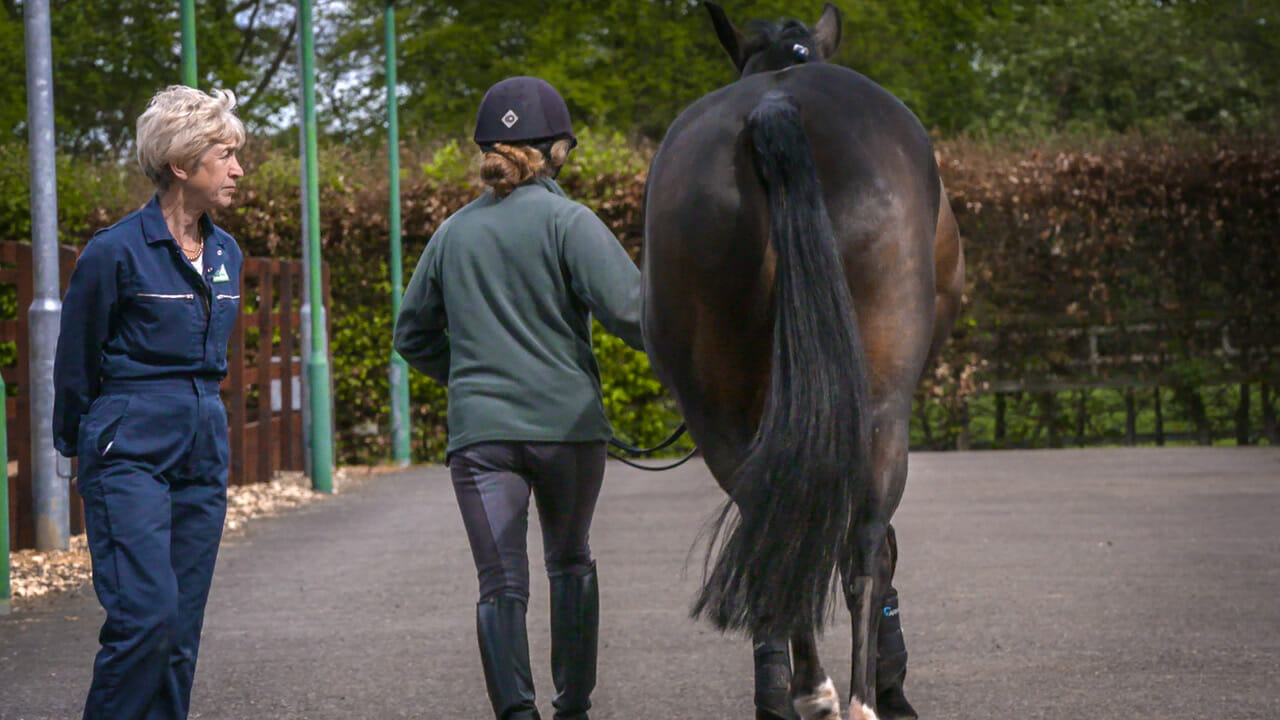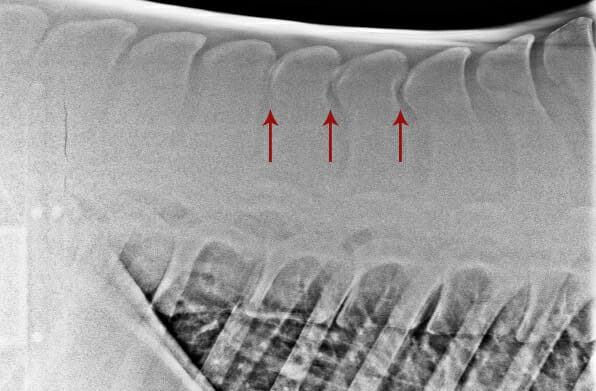Impinging spinous processes or ‘kissing spines’ – Part One
WHAT EXACTLY ARE SPINOUS PROCESSES?
The horse’s back or thoracolumbar region comprises vertebrae which have upwardly projecting spinous processes. These vary in their height and also vary in the spacings between each other at various points in the horse’s back. They tend to be closest together in the region underneath the saddle (approximately between the 8th and 18th thoracic vertebrae). If two spinous processes actually touch each other this is what is called impinging spinous processes or kissing spines. There are many clinically normal horses who have some degree of impinging spinous processes involving from two to as many as six spinous processes. So, just because spinous processes are impinging does not mean they are of any clinical significance whatsoever. The shorter coupled the horse’s back conformation is, the closer the spinous processes are likely to be and the more likely it is that the horse will in fact have impinging spinous processes, but that does not mean that the horse will necessarily have any clinical signs associated with that.
ASSESSING CLINICAL RELEVANCE
When assessing clinical relevance of the impinging spinous processes there are a number of features you have to take into account. Number one, is there any evidence of back pain? If I palpate the back, can I identify any areas of muscle tension or pain and can I relate the site of that pain to where there are close spinous processes identified radiologically? I also have to ask, what is the horse’s passive range of motion? If I stimulate the horse to flex and extend the back in the sagittal plane or to flex from side to side, does the horse have a normal range of motion or is the range of motion restricted? Does the horse mind me stimulating his back to flex and extend or did it show evidence of pain by kicking, or turning its head round or trying to bite or pinning his ears back? I then want to know how does the horse move without a rider and with a rider. Is there any evidence that the weight of the rider and the saddle is influencing the gait? I need to be sure that the saddle is fitting the horse appropriately and not causing the horse any pain. And that the saddle fits not only the horse but also the rider, so I can be confident that the rider isn’t inducing pain.
WHERE’S THE EVIDENCE?
And then if we think we may have clinical signs of back pain, I will want to look at the radiographs and ask the question are there any other radiological changes. So, as well as the spinous processes being close together, are there any remodeling changes, such as areas which are black within the bone – what we call radiolucent areas, or white at the bone, which means the bone is denser. These are secondary modelling changes. The presence of secondary modelling changes makes it slightly more likely than that what we see on x-ray may be of clinical significance. But the key thing for me is to infiltrate local anaesthetic solution around the close spinous processes. If the horse shows clinical improvement in ridden exercise after I have done that, then that indicates to me that it is likely that those impinging spinous processes are of clinical significance. If there is no improvement, or indeed if the horse gets worse, that tells me it is highly unlikely that those impinging spinous processes are of any clinical significance. All in all it is a combination of clinical assessment and response to nerve blocks.




